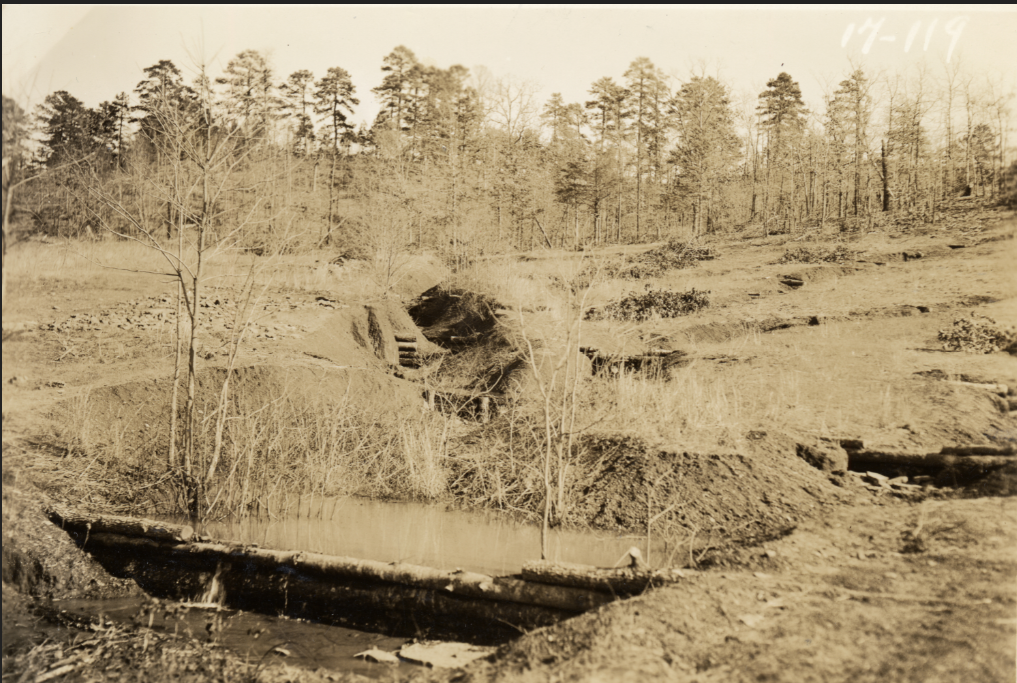Cadron Creek Demonstration Project
Soil Erosion Prevention Demonstration Area Number 17
The Cadron Creek Demonstration Project was established in April of 1934. These projects began in response to droughts across the country. The mission of Soil Conservation Service for these studies was to understand how agriculture impacted the soil at a landscape scale. This was one of the first farmer contact programs. "Systemized Agriculture" was established on 322 of the 700 farms in the area.
Camp Halsey was also established in 1934. The camp housed as many as 200 residents of the Civilian Conservation Corps, Works Progress Administration, Soil Conservation Service, and Military. The workers who built Lake Bennett and who installed conservation practices for the Cadron Creek Demonstration Project lived at Camp Halsey.
The camp had barracks for residents and advisors, a bath house, latrine, mess hall, kitchen, general store, mechanic shop, baseball field, tennis courts, and softball courts. The residents attended high school level courses, trade courses, and courses specific to soil conservation practices.
Sediment control practices were established on 50,000 acres of the 124,000 acre area. The Cadron Creek Demonstration Area included Faulkner, White, and Cleburne County. The practices chosen were installed to fit the soil type, slope, and erosion conditions. Cultivated land was reduced from 50% of the area to 35% of the area. The primary crops at the time included: cotton - cash crop, corn - domestic use, and oats for hay.
The environmental impact at the time was cultivated terraces that had been constructed to grow cotton. Erosion below the terraces was a growing problem. The first solution was to control gully erosion by installing temporary and permanent check dams. The picture above is a sod lined ditch with temporary check dams installed to slow the flow of water. 3,851 temporary check dams were installed in the area during the lifespan of the project.
24 permanent rock dams were also constructed in the area. The drainage area for all of these dams totaled 2,650 acres.
Over 7,000 feet of ditches were dug to protect 134 acres of terrace drainage, 277 meadows were planted to trap sediment runoff, and 412,065 trees were planted during the project.








